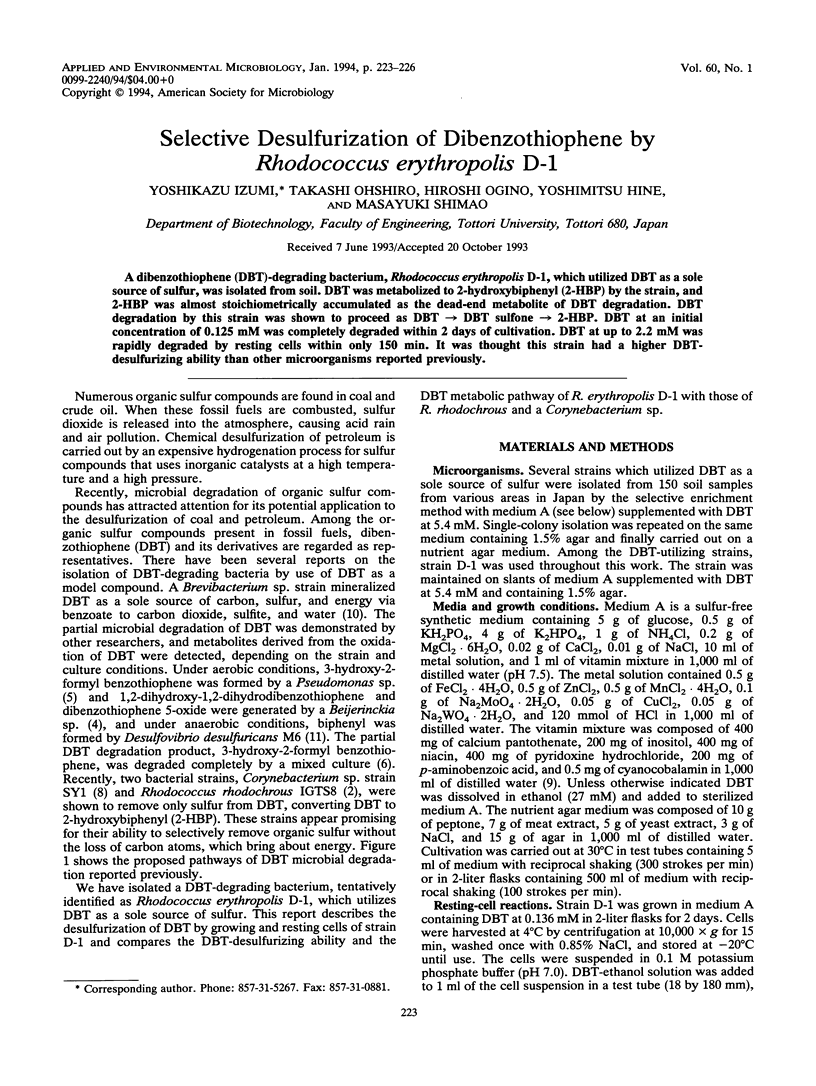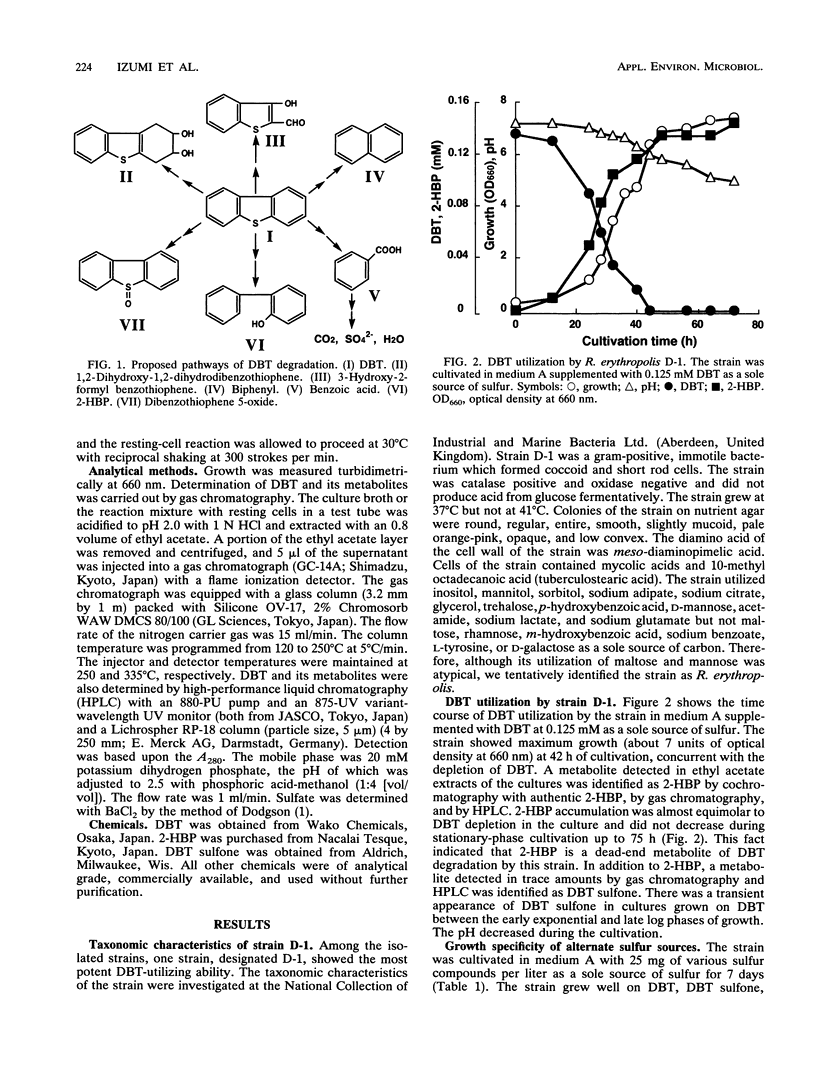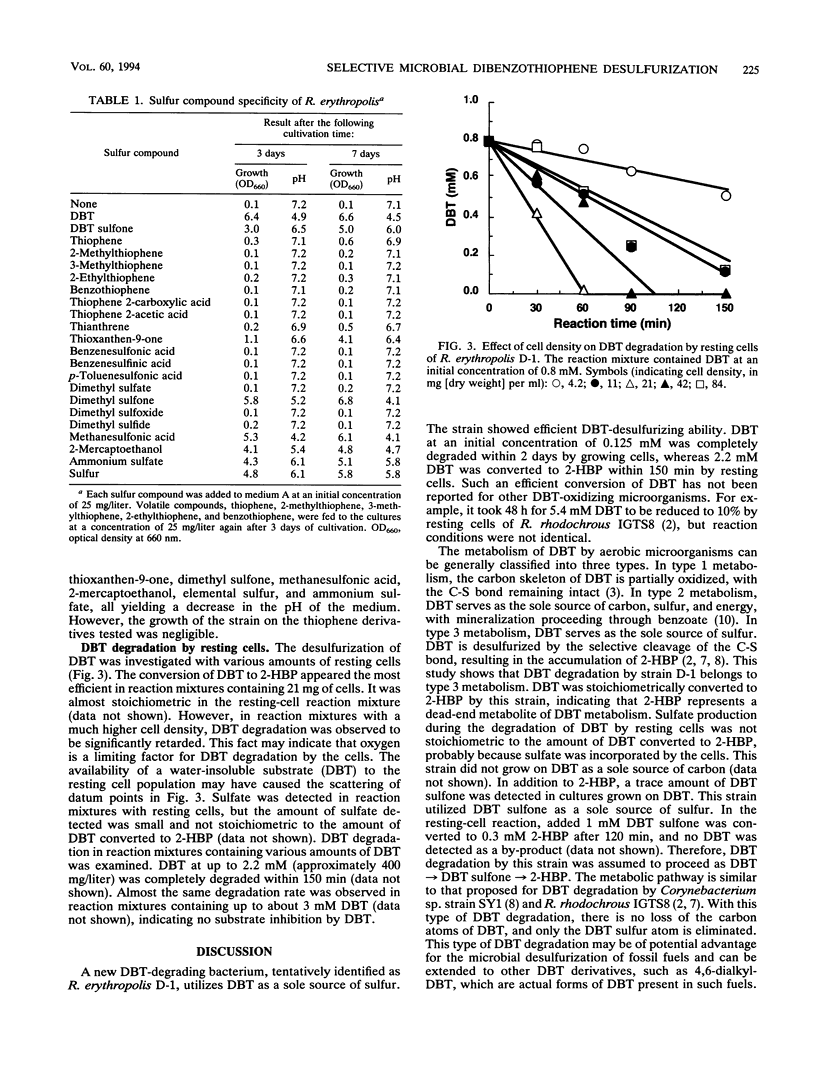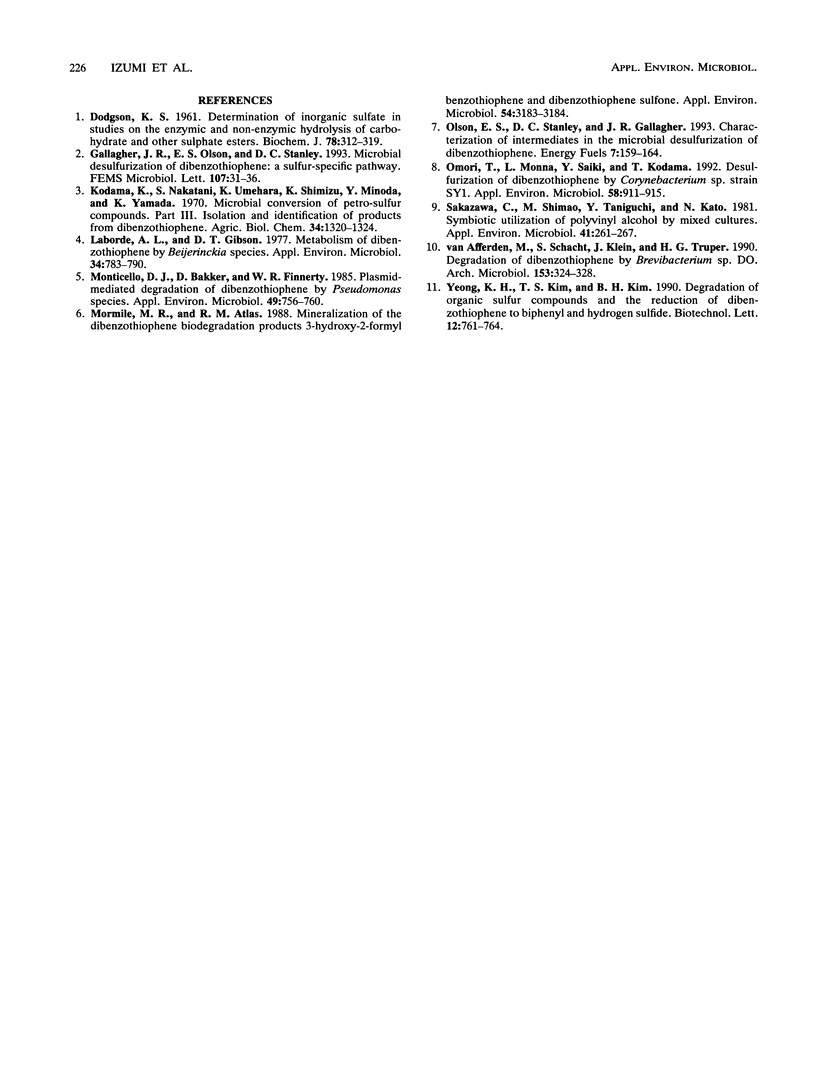Abstract
A dibenzothiophene (DBT)-degrading bacterium, Rhodococcus erythropolis D-1, which utilized DBT as a sole source of sulfur, was isolated from soil. DBT was metabolized to 2-hydroxybiphenyl (2-HBP) by the strain, and 2-HBP was almost stoichiometrically accumulated as the dead-end metabolite of DBT degradation. DBT degradation by this strain was shown to proceed as DBT → DBT sulfone → 2-HBP. DBT at an initial concentration of 0.125 mM was completely degraded within 2 days of cultivation. DBT at up to 2.2 mM was rapidly degraded by resting cells within only 150 min. It was thought this strain had a higher DBT-desulfurizing ability than other microorganisms reported previously.
Full text
PDF



Selected References
These references are in PubMed. This may not be the complete list of references from this article.
- DODGSON K. S. Determination of inorganic sulphate in studies on the enzymic and non-enzymic hydrolysis of carbohydrate and other sulphate esters. Biochem J. 1961 Feb;78:312–319. doi: 10.1042/bj0780312. [DOI] [PMC free article] [PubMed] [Google Scholar]
- Gallagher J. R., Olson E. S., Stanley D. C. Microbial desulfurization of dibenzothiophene: a sulfur-specific pathway. FEMS Microbiol Lett. 1993 Feb 15;107(1):31–35. doi: 10.1016/0378-1097(93)90349-7. [DOI] [PubMed] [Google Scholar]
- Laborde A. L., Gibson D. T. Metabolism of dibenzothiophene by a Beijerinckia species. Appl Environ Microbiol. 1977 Dec;34(6):783–790. doi: 10.1128/aem.34.6.783-790.1977. [DOI] [PMC free article] [PubMed] [Google Scholar]
- Monticello D. J., Bakker D., Finnerty W. R. Plasmid-mediated degradation of dibenzothiophene by Pseudomonas species. Appl Environ Microbiol. 1985 Apr;49(4):756–760. doi: 10.1128/aem.49.4.756-760.1985. [DOI] [PMC free article] [PubMed] [Google Scholar]
- Mormile M. R., Atlas R. M. Mineralization of the dibenzothiophene biodegradation products 3-hydroxy-2-formyl benzothiophene and dibenzothiophene sulfone. Appl Environ Microbiol. 1988 Dec;54(12):3183–3184. doi: 10.1128/aem.54.12.3183-3184.1988. [DOI] [PMC free article] [PubMed] [Google Scholar]
- Omori T., Monna L., Saiki Y., Kodama T. Desulfurization of dibenzothiophene by Corynebacterium sp. strain SY1. Appl Environ Microbiol. 1992 Mar;58(3):911–915. doi: 10.1128/aem.58.3.911-915.1992. [DOI] [PMC free article] [PubMed] [Google Scholar]
- Sakazawa C., Shimao M., Taniguchi Y., Kato N. Symbiotic utilization of polyvinyl alcohol by mixed cultures. Appl Environ Microbiol. 1981 Jan;41(1):261–267. doi: 10.1128/aem.41.1.261-267.1981. [DOI] [PMC free article] [PubMed] [Google Scholar]


